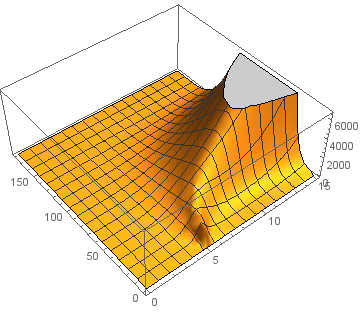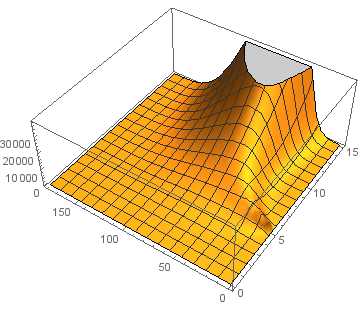Can kites be economically viable for propelling commercial shipping in mainstream applications?
Lets discuss this interesting blog post from '09. Is it true? The claim is that upwind tracking for container ships is not viable with kite power
Can kites be economically viable for propelling commercial shipping in mainstream applications?
Lets discuss this interesting blog post from '09. Is it true? The claim is that upwind tracking for container ships is not viable with kite power
I’ll start by stating my view on this: The apparent wind considering a vessel travelling at a speed of 12 m/s (https://www.quora.com/Merchant-Navy-What-is-the-average-speed-of-a-ship) will most of the time be facing more or less in the direction front to back. Any kite should be working mostly perpendicular to apparent wind and it’s going to be difficult to produce much energy in those directions. If energy is produced more downwind, the drag must be overcome by the propeller force, and there will be significant losses in that chain.
For other ships travelling at half that speed, I believe some energy may be harvested by producing kite power perpendicular to the ship’s direction of travel. But this will probably not be enough to cater for all power needs. I guess this is Skysail’s niche, which is fine.
To conclude: I mostly agree with Peter Lynn on this matter
To have a better discussion I will now number Peter Lynn’s claims:
[Skipping the onboard energy gen for now]
[Also skipping over “has not shown to be working yet” without evidence of someone trying]
[OK, so say kites are only used when the wind is appropriate by direction and strength?]
I do believe pulling container ships with kites is a great idea.
Some ralated information: Skysails has had a working system for some years and has gone “bankrupt” but they’ve got some company structure that allowed for skysails yacht to stay alive and they are basically using all of Skysails IP. My assumption was that the reason was mainly because the people who own the ships are not the people who pay for fuel. Udo Zillman hinted at the possibility that the technology was not ripe. Airseas was recently founded. A spinoff from Airbus. They have done their research and concluded that that’s a worthwhile endeavor and we can safely assume that they know more than we do atm.
Some general claims by me about awes for ship propulsion:
Now on to Peter Lynn:
[to be continued…]
I agree that Peter Lynn’s comments are coloured by his thought that the kite must be a cloth structure mounted on a bridle. If you replace the kitesurfing kite with Kitemill’s high efficiency wing and VTOL, a lot of the arguments are moot.
The argument that still holds very well is: Apparent wind points more or less directly downwind if you sail at 12 m/s. And Kite power production is mostly effective downwind, where the strong forces to withstand tether drag will affect ship speed in a very bad way. If you generate power mostly crosswind or upwards, there is little power to harvest due to the cosine law.
These “facts” carry the most weight in this issue.
Flying a common kite behind ship would be useless. It has to be directly in front of ship or as close to that angle as possible.
More exotic system might work, not for traction, but direct mechanical transfer or energy generation. Lifting kite which flies almost directly overhead. It should even be able to fly against the wind. (Imagine a plane descending). On the tether is a vertical wind turbine. The drag from it is offset by the forward force of the lifter kite.
Now that I think about it… If the whole flying against the wind thing is ture, then one could just use that for traction.^^ brainfart.
That thing would have to have mad CL/CD. Lift acts mostly upward with a very small component pushing against wind direction while drag is still going directly in wind direction. Maybe a kite can fly that way but not worth considering for traction.
However if one puts the kite a bit downwind and lets it yoyo mostly up/down instead of mostly back and forth, one might gain some power.
Anyway - energy generation with wind going against ship course does not need to be possible for kite propulsion to make sense in other scenarios.
From the post:
Oil is going to become more expensive, and unpopular, and maybe even regulated, so alternatives are going to be looked at, like for example trains from China to Europe. Independently, a shipping company that can make shipping cheaper will have an advantage. So there should be a drive to develop alternatives in working markets.
An idea would be to build fuel efficient electric ships, perhaps partly driven by sails/kites, and have recharging/docking stations/ships along the shipping route.
Would prefer liquefied methane generated by kite power as fuel. Energy density much greater, investment cost for storage much lower. Considering the price portion storage is in electric cars, I bet it would be quite an extreme number for ships.
Existing ships could also use vegetable oil.
No matter what process one compares it to, losses are always much higher than just “tying the ship to the wind” and letting it be pulled.
Storing electricity doesnt have to be expensive if your batteries could weigh almost anything and space is a minor issue. Im thinking liquid batteries, cheap and lower capacity.
Anyways, my electric car is far cheaper than a fossile car, so with that argument every container ship would use batteries too


Dont take these pictures to seriously. But the plot shows the availabale power in a 1 m^2 kite in 10 m/s wind on a ship travelling 0…15 m/s in the direction 0…180 to the wind. 0 degrees is straight downwind. The glide number G of the wing is 5 and 10. The power is only produced in perpendicular to the vessel path so as to not cause any drag. And it’s a rotating windmill.
It is quite possibly entirely wrong.
If it is correct though, there is ample power available on downwind tacks as long as you’re moving slightly fast. When moving at 15 m/s, and the wind is 10 m/s, you’re generating power 3/4 of the time, depending on wind direction
If anyone has a good map of global offshore wind resource and direction that would be nice.
This one is a great one for land: https://globalwindatlas.info/
This one is a nice visualization but not useful for data extraction: https://earth.nullschool.net/#current/wind/surface/level/orthographic=-285.60,29.91,429
(use mouseover at the scale)
Wow.Thx. Here’s the paper. This will take some work to run and understand. Maybe one day this can run as a web app on awesystems.info
So many conversion losses. I wouldn’t be surprised if you’d end up with an efficiency in the low single digit percentages. Now sailing starts to look more interesting.
If you were able to produce LNG onboard a kite ship, its probably better to pump it over into another vessel so it could use it for fuel in that way. To make things more interesting, pump the fuel in transit
Why would you generate it on a ship?^^
It’s either slowing the ship down by drag or one could just as well use a pure traction kite. Either way gigantic transmission cost.
I was talking about Generating energy and converting it to LNG on platforms.
One good reason would be the fact that ships may travel the seas to find areas with optimal wind and current conditions.
The other reason could the be the possibility to refuel ships in traffic. Remember a cargo boat travels nonstop at 12 m/s.
The third reason could be that maintenance for a ship is a lot simpler than maintenance for a platform.
The fourth reason could be that by using some of the generated power for ship propulsion, the apparent wind speed increases, making it possible to produce with a heavy kite in lighter winds.
In fact, I don’t see many good reasons to put the power plant on a platform, other than to have an anchor connected to the bottom of the sea.
Ships are more flexible.
The only way to use kites that I can think of at open sea is if the ocean currents flow in opposite direction of the wind and large sails are deployed in the water (sea anchors) or the ship is anchored to the seabed.
Special tanker/battery boats might be the better solution, depending on a lot of things.
Why is it that maintaining a ship is simpler than a platform? A ship would need to be anchored as well and a platform would not have to be as steady as an oil rig. I agree- as long as it is anchored and not trying to go anywhere itself it might as well be a boat.
The fourth reason just produces losses. I know you were not suggesting a perpetuum mobile, but I don’t think getting a kite flying in wind lower than its cut in speed is useful. Little energy generated.
The ship does not need to be anchored. The keel of a sailboat is a very powerful device, once the ship is moving a bit forward.
The fourth reason is valid. Some of the kite’s power is used for propulsion of the ship (say 30%). This increases the effective wind experiences on the vessel, but also the directio of the wind will turn in a way so that the windmill drag will act as a breaking force to the vessel. So, depending on the angle you are able to fly your AWE rig efficiently to the side of the wind window (obviously less than 90 degrees due to losses and the cosine law), you still may harvest up to 70% of the power. The reason 70% may be better than 100% is that now the minimum wind speed is a bit higher, and you do not have to land your AWE wings.
Anyone experienced in kitesurfing will know this effect. Going on a tack well powered, once you stop moving, the kite falls out of the sky